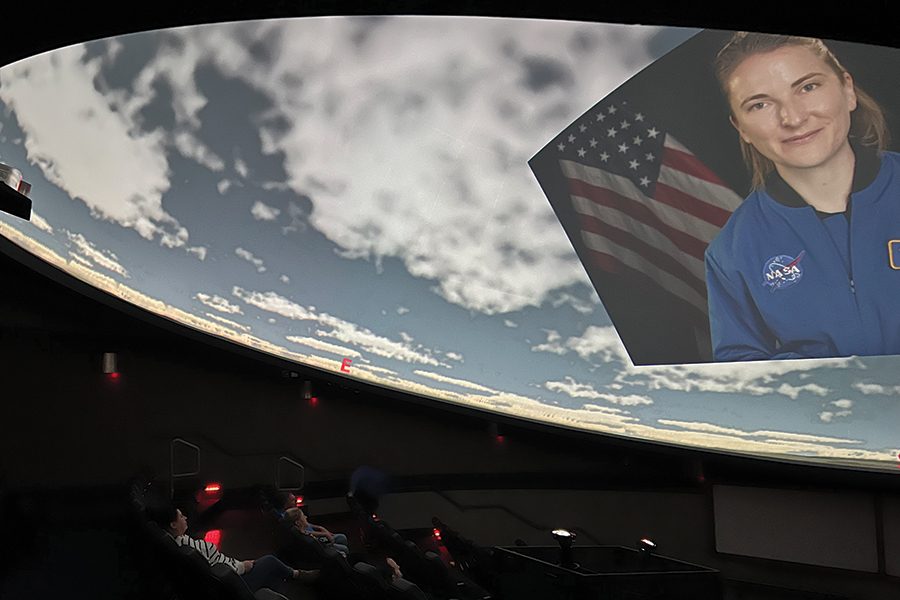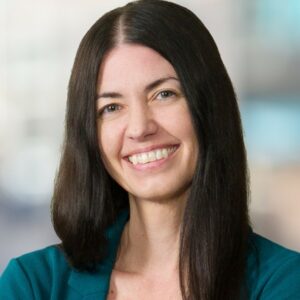
Home » Revamped planetarium helps community understand universe
Revamped planetarium helps community understand universe

April 12, 2023
It’s dark in the theater, except for the 36-foot hemispherical dome suspended from the ceiling that projects an image of a blue sky with bright white clouds.
A woman in a crisp uniform appears on video.
“Greetings from NASA’s Johnson Space Center in Houston, Texas,” says Richland High School graduate and NASA astronaut Kayla Barron. “...If you’re here at the Columbia Basin College planetarium, you’re clearly curious about what lies beyond our home planet. This is a fantastic place to feed that curiosity, learning about our solar system and the vast universe beyond.”
The video featuring one of the Tri-Cities’ most famous scientists and adventurers plays for visitors at the CPCCo Planetarium at the Pasco college. It’s one of several new features at the facility, which has reopened after a two-month break for upgrades, including new projection and lighting systems in the theater and a revamped lobby that now has learning elements.
“We’re incredibly grateful to our partners who made this happen,” said CBC President Rebekah Woods. “These kinds of things don’t happen alone.”
Those partners include Central Plateau Cleanup Company, or CPCCo, which is donating $350,000 over 10 years for the planetarium, and HAPO Community Credit Union, whose $150,000 donation is covering the upgrade of the lobby. The college’s facilities team also painted and made some other updates as part of the project.
Bechtel was the planetarium’s founding sponsor.
Creating an experience
The facility first opened in 2012, and it’s welcomed more than 147,000 visitors since then, including community members, area school children and CBC staff and students. It offers public shows on alternating Fridays and Saturdays, and it’s a popular field trip destination, with more than 44% of those total visitors being students in preschool through high school.
The upgrade included replacing the old 2K projection system with a 4K system, which makes for brighter images and better contrast. The lighting system also got an overhaul.
“Our old system had LEDs around the dome itself, but they were all or nothing — one color or another. With the new system, each bank of LEDs is programmable, so we can put a rainbow up on the dome, make lights chase each other. It adds to the experience of the whole thing,” said Erin Steinert, director for the planetarium and observatory.
A typical presentation lasts about an hour.
“The first part is live. That’s where we’ll use our software and projectors to show the night sky and talk about where to find planets and stars and constellations. We talk to the audience about astronomy news and give them the chance to ask questions,” Steinert said.
The second half includes a full-dome film from the planetarium’s inventory. Most focus on astronomy, although other science-related topics also are available — from cells to volcanoes.
The theater also is able to stream events such as shuttle launches, depending on the timing.
The immersive experience makes astronomy — with its enormous scale that’s measured in millions or billions of miles or lightyears — easier to process and understand, Steinert said.
And that’s important because astronomy and space are worthy of exploration.
“Humans are wired to want to go out there and learn more about the universe around us,” Steinert said. “This facility helps us to do that.”
A STEM focus
Before visitors head into the theater, they pass through the HAPO Learning Lobby. The remodel saw learning elements added, including wall wraps and photo/text panels on the sun, planets and other celestial bodies. The panels have information in both English and Spanish.
The lobby also has an area with interactive activities for kids.
Part of the goal of the planetarium is to stoke interest among young people in the STEM fields of science, technology, engineering and math — and to get them excited about learning, imagination and exploration in general. The next Kayla Barron could be sitting in the audience, taking in the heavens projected overhead and dreaming of visiting them someday.
The planetarium also aims to share the wonder of science and the cosmos with the community as a whole.
John Eschenberg, president of CPCCo, recently got a look at the remodeled planetarium.
“It’s a multimodal learning system,” he said, sitting in the learning lobby after a glimpse of a theater presentation. “It’s a wonderful venue for teaching and learning.”
His company, which is a prime contractor for Hanford cleanup, is invested in helping build the workforce of tomorrow, as legacy employees retire and demands grow, he said. And it’s invested in the community, he said.
“We are over the moon at the opportunity to sponsor (the planetarium),” he said. “It’s just part of our commitment as a member of a growing community to give back in some small way.”
Real Estate & Construction Local News
KEYWORDS april 2023





